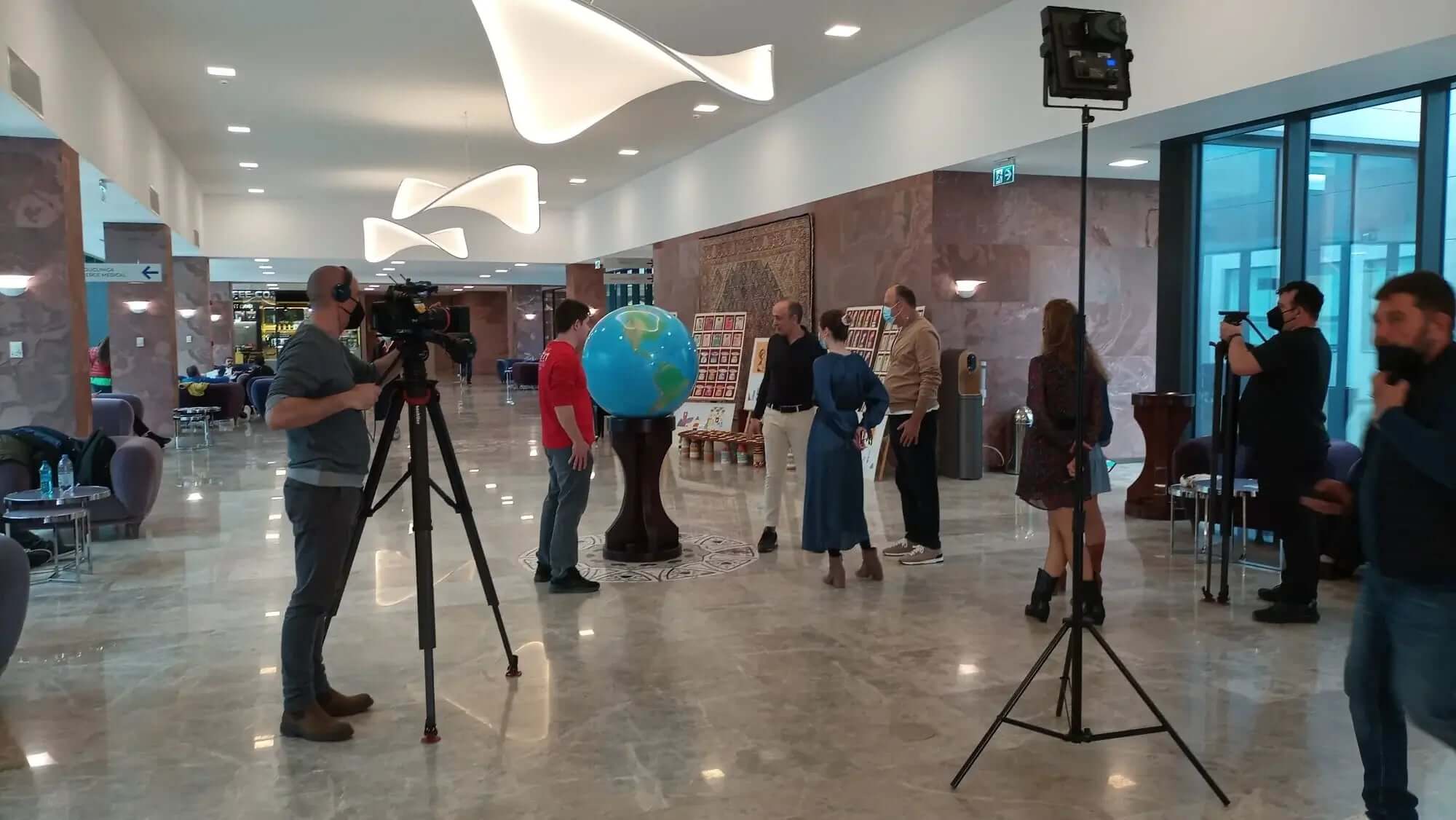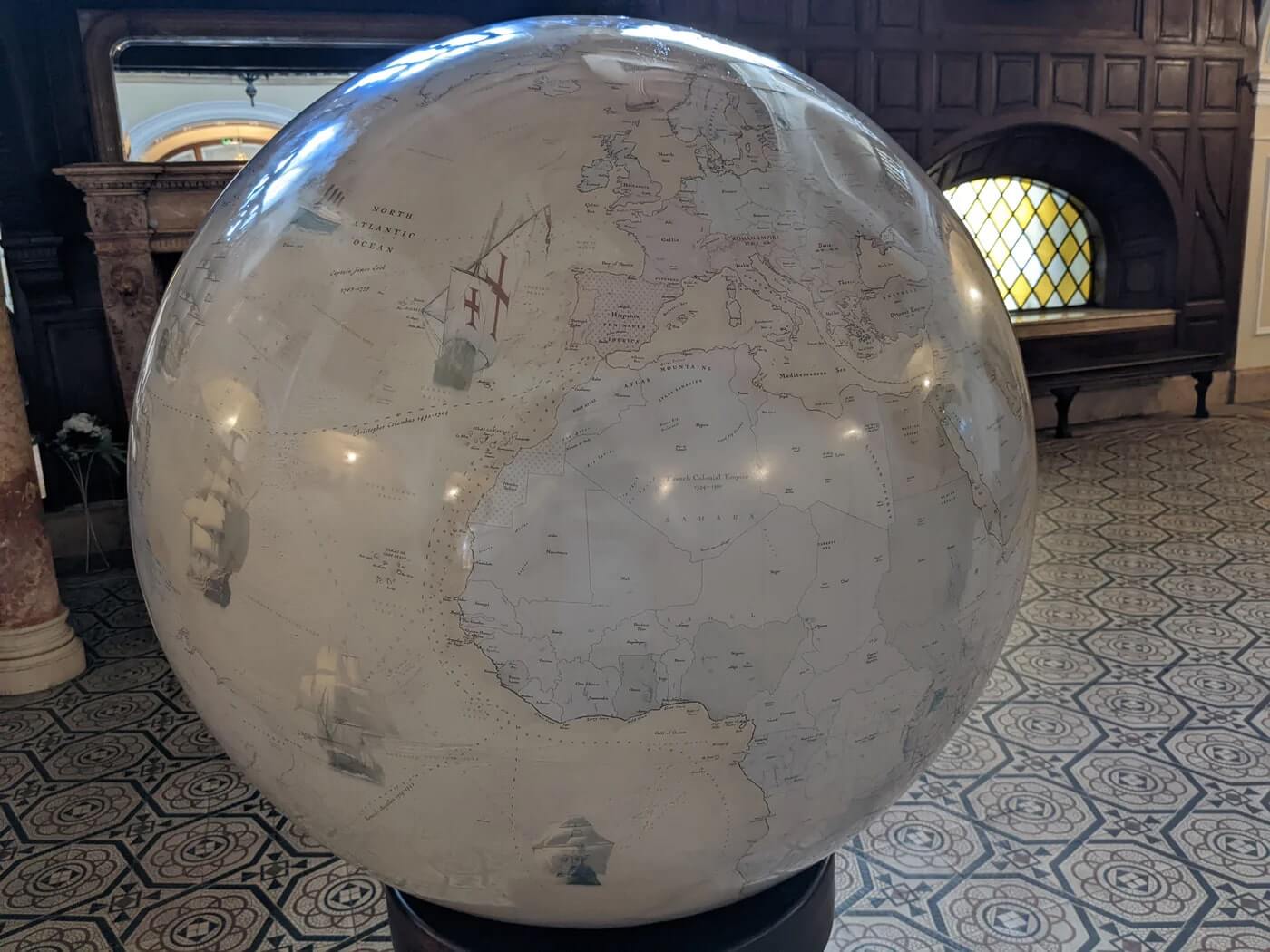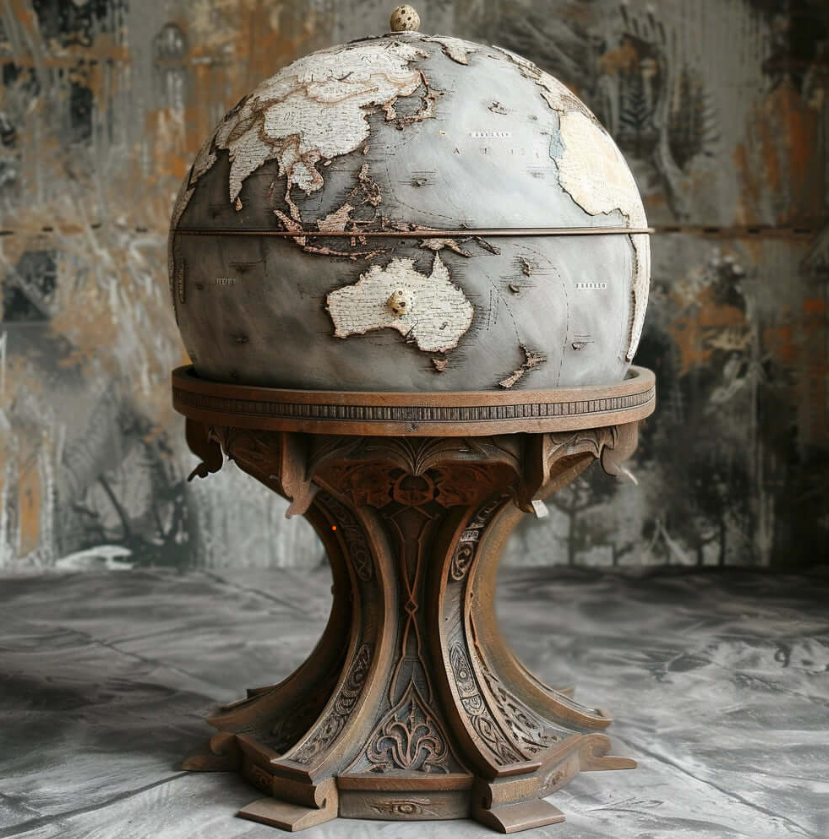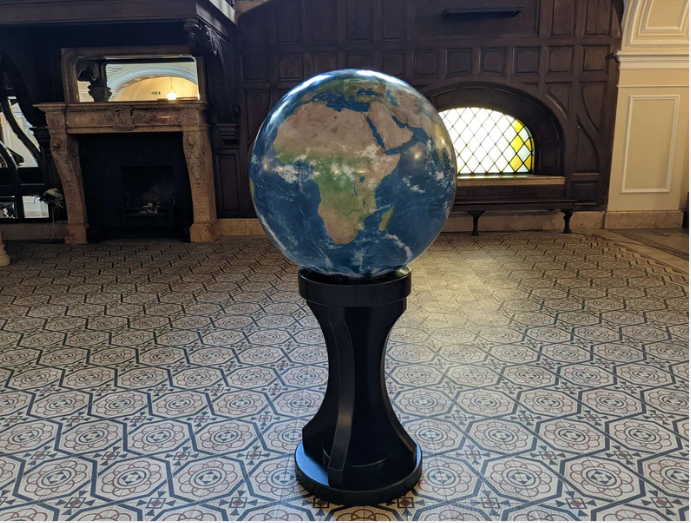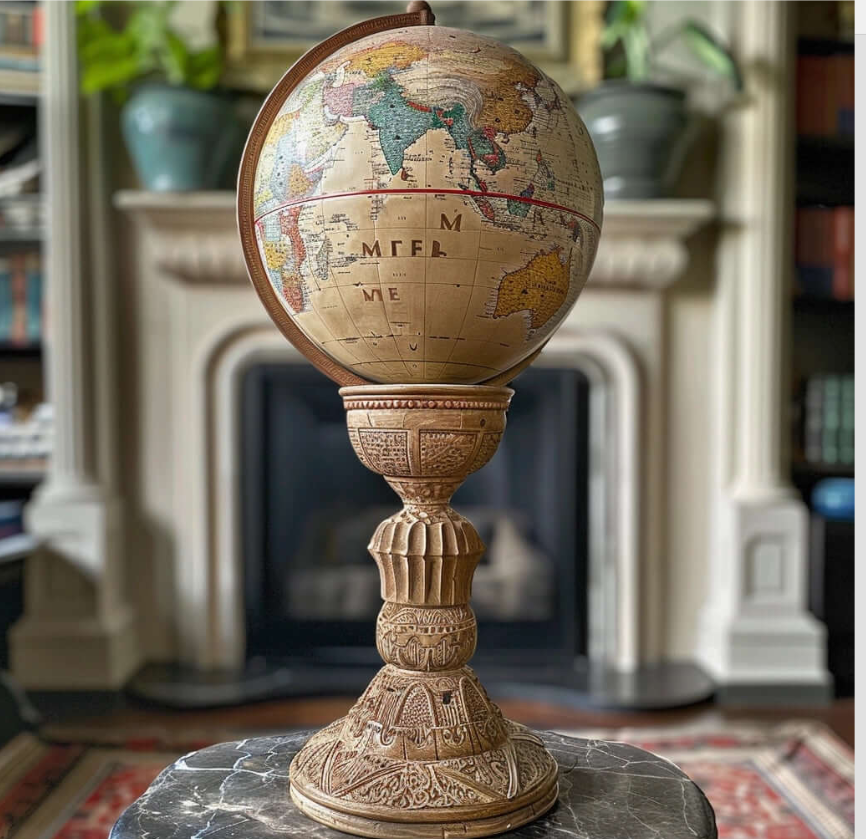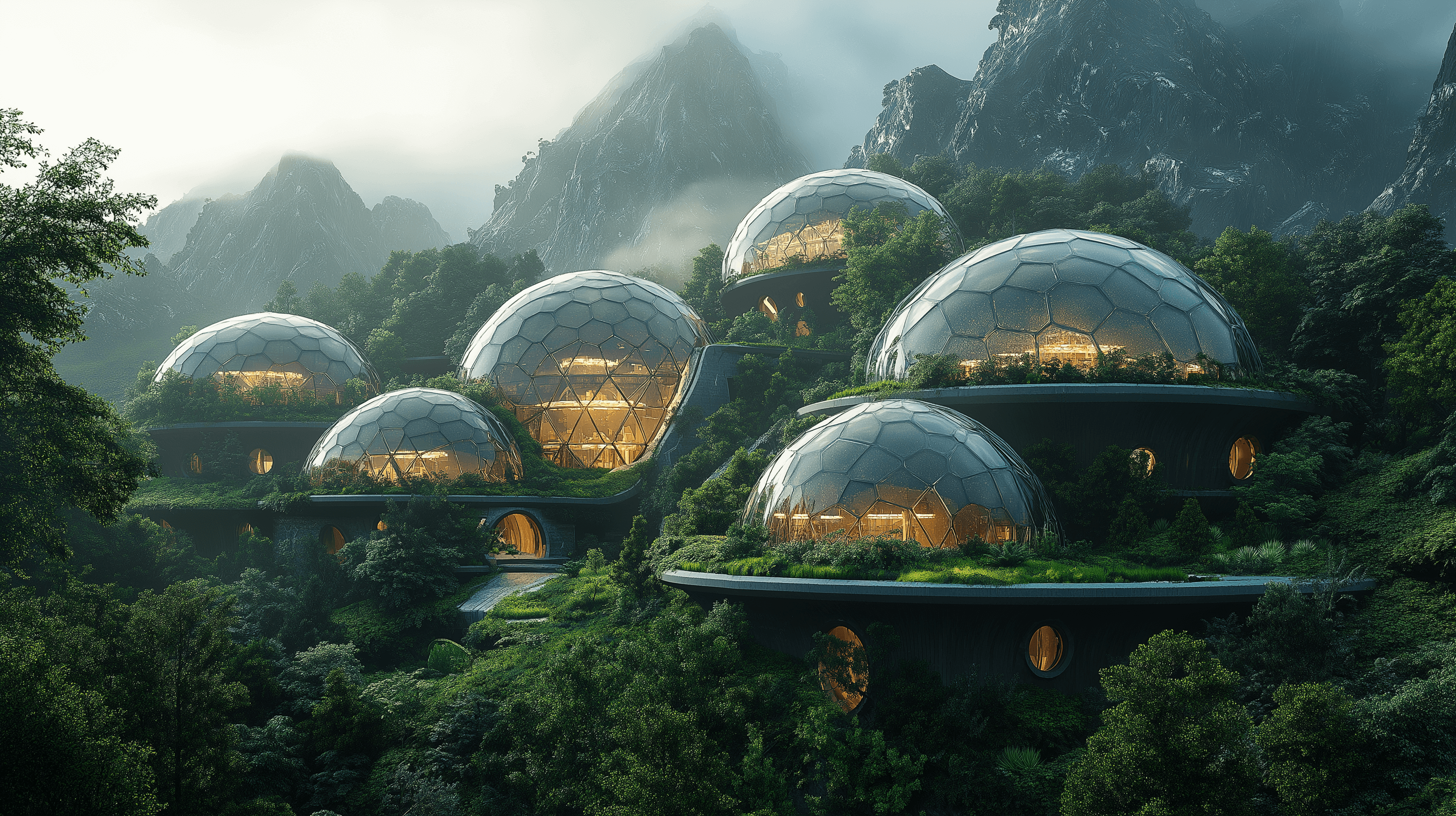Top 10 Büro-Weltgloben
Top 10 Weltkugeln für ein Büro
Eine visuelle Liste erstaunlicher Weltkugeln in einem Büro

- Ultrarealistischer Globus
Dieser äußerst detaillierte Globus ist sowohl ein geografischer als auch ein politischer Globus und zeigt den Planeten in seiner natürlichsten Form, mit Klimazonen, natürlichen Farben und einer Fülle faszinierender geografischer Fakten über unseren Planeten.

- Die größten Imperien der Geschichte Globe
Hervorhebung ausgedehnter Reiche wie unter anderem des Römischen, Mongolischen, Britischen, Osmanischen und Spanischen Reichs mit unterschiedlichen Farben oder Markierungen zur Abgrenzung ihrer Territorien auf ihren jeweiligen Höhepunkten.

- Weltstatistik-Globus

Ein informationsreicher Globus mit zahlreichen faszinierenden Statistiken wie:
- Weltkarte der Bevölkerungsdichte
- Weltkarte des BIP pro Kopf
- Weltkarte mit dem Risiko von Naturkatastrophen
- Globale Biodiversitäts-Hotspots
- Prähistorischer Weltglobus - Erde vor 200 Millionen Jahren

Ein Globus des Superkontinents Pangaea vor 200 Millionen Jahren mit ungefähren heutigen Grenzen und einigen der berühmtesten und interessantesten prähistorischen Tiere
- Mars Globus Der Rote Planet

Ein ultradetaillierter und akkurater Globus des 4. Planeten von der Sonne aus. Hergestellt mit den neuesten Satellitenbildern der NASA, auf denen jeder Krater im Detail zu sehen ist. Vom höchsten Vulkan im Sonnensystem bis zu den massiven Valles Marineris, einem Canyonsystem, das sogar den Grand Canyon auf der Erde in den Schatten stellt.
- Globus aus dem Zweiten Weltkrieg

Ein Globus voller faszinierender Details, die Einblicke in die geopolitische Landschaft jener Ära bieten, wie zum Beispiel:
- Gebiete der Achsenmächte und der Alliierten
- Schlachtfelder
- Besetzte Gebiete
- Neutrale Länder
Sowie faszinierende, faszinierende Orte wie:
- Die Standorte des Manhattan-Projekts
- Die Ostfront: Das riesige Gebiet, in dem Nazideutschland und die Sowjetunion die größten Landschlachten der Geschichte ausfochten
- Die Burmastraße: Eine wichtige Versorgungsroute zwischen Burma (heute Myanmar) und China, die den chinesischen nationalistischen Streitkräften als Lebensader gegen die japanische Aggression diente.
- Das 16. Jahrhundert: Zeitalter der Entdeckungen Weltglobus

Eine visuelle Erzählung einer der umwälzendsten Perioden der Menschheitsgeschichte, die von beispielloser globaler Erforschung, Expansion und kulturellem Austausch geprägt war.
- Routen der Entdecker: Die Karte könnte die großen Entdeckungsreisen berühmter Entdecker wie Christoph Kolumbus, Vasco da Gama, Ferdinand Magellan und John Cabot hervorheben. Ihre Routen über den Atlantik, den Pazifik und den Indischen Ozean würden nachgezeichnet und die Ausweitung der europäischen Seefahrt veranschaulicht.
- Entdeckungen der Neuen Welt: Es würde die Entdeckung und Kartierung neuer Länder auf dem amerikanischen Kontinent zeigen, darunter die Reisen des Kolumbus in die Karibik, die Expeditionen von Hernán Cortés in Mexiko und die Erkundung Südamerikas durch Persönlichkeiten wie Amerigo Vespucci und Francisco Pizarro.
- Handelsrouten: Die Karte könnte die Einrichtung neuer Handelsrouten zwischen Europa, Afrika, Asien und Amerika darstellen. Dazu gehören die lukrativen Gewürzhandelsrouten nach Ostindien, der transatlantische Handel zwischen Europa, Afrika und Amerika sowie die Entwicklung globaler Handelsnetzwerke.
- Kolonialreiche: Es würde die Expansion europäischer Kolonialreiche veranschaulichen, mit Gebieten, die von Spanien, Portugal, England, Frankreich und den Niederlanden beansprucht und besiedelt wurden. Dies könnte die Gründung von Kolonien in der Karibik, Südamerika, Nordamerika, Afrika und Asien umfassen.
- Begegnungen mit indigenen Völkern: Die Karte könnte Interaktionen zwischen europäischen Entdeckern und indigenen Völkern in Amerika, Afrika und Asien hervorheben. Dazu könnten Darstellungen von kulturellem Austausch, Konflikten und den Auswirkungen der europäischen Kolonisierung auf indigene Gesellschaften gehören.
- Fauna und Flora Weltkugel

Eine reichhaltige und lebendige Darstellung der vielfältigen Tier- und Pflanzenarten der Erde.
Zu den Hauptmerkmalen gehören:
- Artenvielfalt
- Lebensraumzonen
- Ökologische Hotspots wie Regenwälder, Korallenriffe, Feuchtgebiete usw.
- Gefährdete Arten
- Das 8. Jahrhundert: Der Globus des Goldenen Zeitalters des Islam

Eine visuelle Hommage an die bemerkenswerten Errungenschaften und das Erbe der islamischen Zivilisation während dieser entscheidenden Periode der Geschichte.
- Islamische Kalifate: Die Karte würde die Ausdehnung der islamischen Kalifate im 8. Jahrhundert zeigen, darunter das Umayyaden-Kalifat, das sich von Spanien bis Zentralasien erstreckte, und das Abbasiden-Kalifat mit Zentrum in Bagdad.
- Städte des Lernens: Es würde renommierte Zentren des Lernens und der Wissenschaft umfassen, wie Bagdad, Córdoba und Kairo, wo Gelehrte mit unterschiedlichem Hintergrund bahnbrechende Fortschritte in verschiedenen Bereichen erzielten.
- Wissenschaftliche Fortschritte: Die Karte würde Errungenschaften in den Naturwissenschaften, der Mathematik und der Astronomie hervorheben, darunter die Erhaltung und Übersetzung klassischer griechischer und römischer Texte, die Entwicklung der Algebra und Trigonometrie sowie astronomische Beobachtungen und Berechnungen.
- Kultureller Austausch: Es würde den lebhaften kulturellen Austausch veranschaulichen, der während des Goldenen Zeitalters des Islam stattfand, als Gelehrte aus der islamischen Welt mit Gelehrten aus Byzanz, Persien, Indien und China interagierten, was zur Weitergabe von Wissen und Ideen zwischen den Zivilisationen führte.
- Architektonische Wunderwerke: Die Karte könnte ikonische architektonische Errungenschaften des Goldenen Zeitalters des Islam zeigen, etwa die Große Moschee von Córdoba, den Felsendom in Jerusalem und die Alhambra in Granada, die die Verschmelzung islamischer, byzantinischer und persischer Architekturstile veranschaulichen.
- Handelsnetzwerke: Es würde die Ausweitung islamischer Handelsnetzwerke darstellen, einschließlich der Seidenstraße, der Handelsrouten im Indischen Ozean und des Mittelmeerhandels, die den Austausch von Waren, Technologien und kulturellen Einflüssen zwischen Ost und West erleichterten.
- Literarische und künstlerische Beiträge: Die Karte könnte die Blütezeit der Literatur, Poesie, Kalligraphie und Kunst während des Goldenen Zeitalters des Islam hervorheben, darunter die Werke berühmter Dichter wie Rumi und Omar Khayyam sowie die Entwicklung komplizierter geometrischer Muster in der islamischen Kunst und Architektur.
- Technologische Innovationen: Es würden technologische Innovationen wie Fortschritte bei Bewässerungstechniken, die Entwicklung der Papierherstellung und Verbesserungen bei der Textilproduktion präsentiert, die zum Wohlstand und kulturellen Reichtum der islamischen Welt beigetragen hätten.
- Weltglobus aus dem 3. Jahrtausend v. Chr.

Eine faszinierende Gelegenheit, alte Zivilisationen und Kulturen zu erkunden.
Altes Mesopotamien (3. Jahrtausend v. Chr.):
- Mesopotamien, die Wiege der Zivilisation, erlebte den Aufstieg der Sumerer, Akkader, Babylonier und Assyrer.
Altes Ägypten (3. Jahrtausend v. Chr. – 1. Jahrtausend v. Chr.):
- Das Niltal war die Heimat einer der beständigsten Zivilisationen der Geschichte.
Frühe chinesische Zivilisation
Mediterrane Kulturen:
- Minoische Zivilisation und frühe ägäische Zivilisationen
Zentralasiatische Kulturen entlang der Ufer des Flusses Amu Darya
